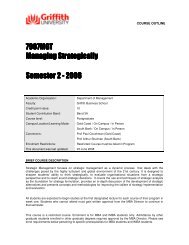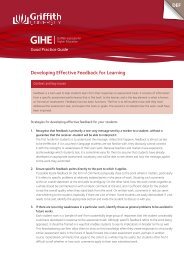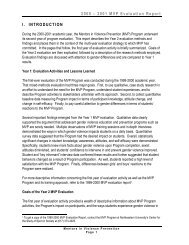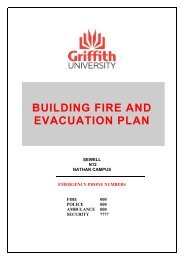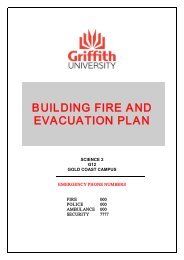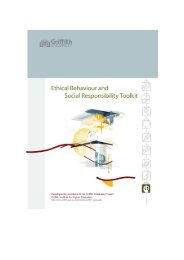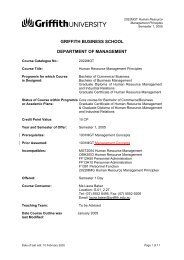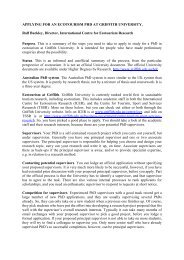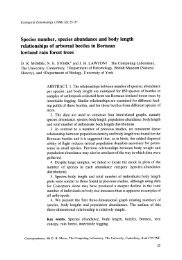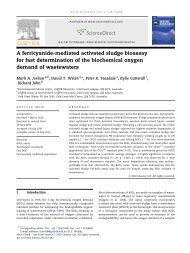Getting Started With Blended Learning ( PDF 2.7 ... - Griffith University
Getting Started With Blended Learning ( PDF 2.7 ... - Griffith University
Getting Started With Blended Learning ( PDF 2.7 ... - Griffith University
You also want an ePaper? Increase the reach of your titles
YUMPU automatically turns print PDFs into web optimized ePapers that Google loves.
Specific design questions:<br />
‣ ¾ What do I want to develop?<br />
‣ ¾ Why do I want to develop it?<br />
‣ ¾ What do I want students to do? Is it<br />
compulsory?<br />
‣ ¾ How will it help students’ learning? What<br />
role will it play in the course?<br />
‣ ¾ Why would a student be bothered<br />
to engage in the blended learning<br />
elements?<br />
‣ ¾ How will I know/measure if students have<br />
achieved the desired outcomes?<br />
Broader course issues:<br />
‣ ¾ How accessible is the technology for students? What<br />
costs, if any, are involved?<br />
‣ ¾ What time is needed for planning, design, and<br />
development? (Including learning I need to do?)<br />
‣ ¾ What organisational support is there for me? For the<br />
students?<br />
‣ ¾ Will other staff be involved, and in what ways? Will<br />
they need training and support?<br />
‣ ¾ What are the workload implications for staff and<br />
students?<br />
The following <strong>Blended</strong> <strong>Learning</strong> Design Worksheet may help you to map and align your objectives,<br />
assessments, teaching and learning activities and support resources.<br />
Students struggle with, or drop out of, blended learning courses because:<br />
• The workload is too great – if blended learning and face-to-face<br />
elements are not integrated but simply run parallel and independently<br />
from each other the overall workload is often far greater than when<br />
using only one mode of delivery. Keep student workload at an<br />
appropriate level.<br />
• They are provided with inadequate or no support and/or are confused<br />
about what is required of them – ensure students are appropriately<br />
“oriented” to the course design and given clear guidelines regarding<br />
expectations and requirements.<br />
• They experience problems with technology – high tech is often high<br />
risk, so make sure you have tested the technology from a student’s<br />
perspective and provided adequate information and support.<br />
14 <strong>Getting</strong> <strong>Started</strong> with <strong>Blended</strong> <strong>Learning</strong>





